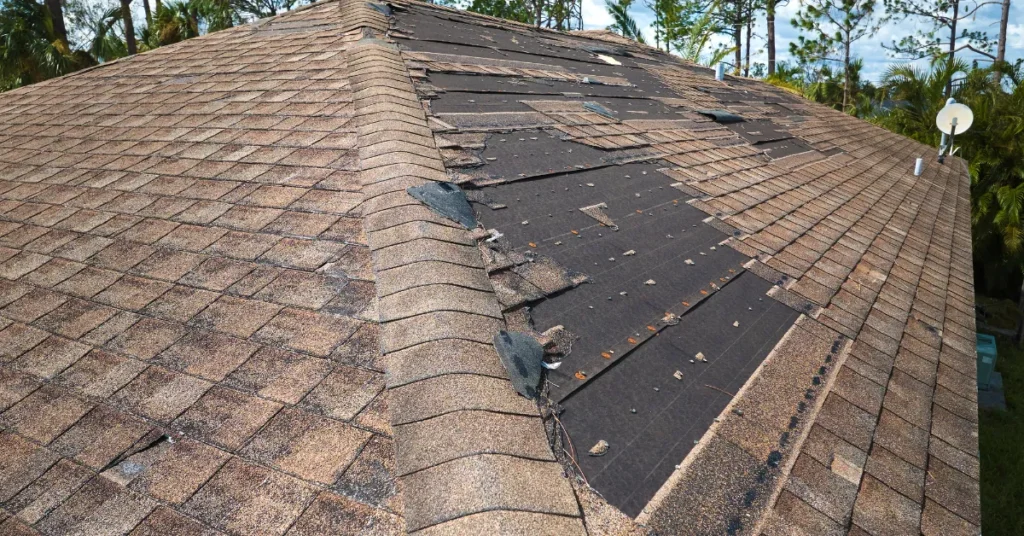Hey there! If you’re thinking about a new roof or just curious about what’s out there, you’ve landed in the right spot. Choosing the right roof isn’t just about looks; it’s about finding something that fits your climate, budget, and lifestyle. Let’s break down the different roof types, toss in some info on types of roof vents, roof shingles types, and roof flashing types, and help you figure out what’s best for your home. Ready? Let’s dive in!
Why Roof Types Matter
Your roof is like your home’s shield. It takes on rain, snow, scorching sun, and wild winds. However, not all roof types are created equal. Some handle heavy snow like champs, while others are better at keeping your house cool in the blazing heat. Plus, your budget plays a significant role; nobody wants to break the bank, right? By understanding the types of roofs out there, you can pick one that’s practical, durable, and doesn’t make your wallet cry.
Common Roof Types: What’s Out There?
Let’s start with the big picture. There are tons of roof types, but here are the most popular ones you’ll see in neighborhoods across the country:
Gable Roof
This is the classic triangle-shaped roof you probably drew as a kid. Gable roofs are super common because they’re affordable and work well in most climates. The steep slope lets rain and snow slide right off, which is great if you live somewhere with heavy storms or snow. But if you’re in a windy area, you might need extra bracing to keep it secure.
Pros: Cheap to build, good for rainy or snowy climates, and extra attic space.
Cons: Not the best for super windy areas unless reinforced.
Best for: Budget-conscious folks in moderate to cold climates.
Hip Roof
Hip roofs slope down on all four sides, making them look a bit like a pyramid. They’re sturdy and handle wind better than gable roofs, so they’re a solid pick for hurricane-prone areas. The downside? They’re pricier to build and can be trickier to ventilate.
Pros: Wind-resistant, durable, sleek look.
Cons: More expensive, less attic space.
Best for: Homes in windy or coastal climates.
Flat Roof
Flat roofs aren’t totally flat they have a slight slope for drainage. You’ll see them on modern homes or commercial buildings. They’re budget-friendly and great for hot, dry climates, but they’re not the best for heavy rain or snow since water can pool if drainage isn’t perfect.
Pros: Affordable, modern vibe, easy to add solar panels or a rooftop deck.
Cons: Needs good drainage and higher maintenance.
Best for: Hot, dry climates or urban homes.
Mansard Roof
Think fancy French chateaus. Mansard roofs have four steep slopes and a flat top, giving you tons of attic space (sometimes even an extra living floor). They’re gorgeous but costly and can be a pain to maintain.
Pros: Lots of extra space, unique style.
Cons: Expensive, high maintenance.
Best for: Historic or luxury homes.
Gambrel Roof
Picture a barn with a gambrel roof. It’s got two slopes on each side: steep at the top, and gentler at the bottom. It’s great for extra attic space and sheds snow well, but it’s not the toughest against strong winds.
Pros: Extra space, rustic charm.
Cons: Less wind-resistant, complex to build.
Best for: Cold climates with a farmhouse vibe.
Roof Shingles Types: What’s Covering Your Roof?
Now that we’ve covered types of roofs, let’s talk about what goes on top: roof shingles types. Shingles protect your roof from the elements, and picking the right ones can save you money and headaches.
Asphalt Shingles
These are the most popular shingles out there. They’re cheap, easy to install, and come in tons of colors. You’ve got three main types:
- 3-Tab Shingles: Flat, budget-friendly, but less durable (lasts 15-20 years).
- Architectural Shingles: Thicker, textured, more durable (25-30 years).
- Premium Shingles: These are fancy designs with a long lifespan (up to 50 years).
Best for: Most climates, budget-conscious homeowners.
Metal Shingles
Metal shingles are tough as nails. They last 40-70 years, resist fire, and reflect heat, keeping your home cooler. They’re pricier upfront, but can save you money long-term.
Best for: Hot or wildfire-prone areas.
Slate Shingles
Slate is the luxury pick. It’s a natural stone, lasts 75+ years, and looks stunning. But it’s heavy and crazy expensive, so your home’s structure needs to handle the weight.
Best for: High-end homes in any climate.
Composite Shingles
Composite shingles are made from recycled materials that mimic slate or wood but are lighter and cheaper. They’re eco-friendly and last 30-50 years.
Best for: Eco-conscious homeowners.
Clay or Concrete Tiles
These tiles are common in Mediterranean-style homes. They’re durable (50+ years), fire-resistant, and great for hot climates. But they’re heavy and pricey.
Best for: Warm, dry climates.
Types of Roof Vents: Keeping Your Roof Healthy
A good roof isn’t just about looks; it needs to breathe! Types of roof vents help air flow through your attic, preventing heat buildup, moisture, and mold. Here’s what you need to know:
Ridge Vents
These run along the peak of your roof. They’re subtle and effective, and they work great with soffit vents (those under the eaves). They’re perfect for most roof types.
Gable Vents
These are the vents you see on the sides of gable roofs. They’re decorative and cheap but less efficient than ridge vents.
Turbine Vents
Those spinning vents on old roofs are turbine vents. Wind spins them to pull hot air out. Turbine vents are affordable but can wear out over time.
Box Vents
Small, square vents are scattered across the roof. They’re simple and work well on flat or low-slope roofs.
Power Vents
These vents, which are electric or solar-powered, actively pull air out. They’re great for super hot attics but need wiring and maintenance.
Tip: Pair vents with insulation for the best results. Talk to your roofer about what vents suit your roof type and shingle choice.
Roof Flashing Types: Stopping Leaks
Roof flashing is the unsung hero that keeps water from sneaking into your home at seams, edges, or joints. Here are the main roof flashing types:
- Step Flashing: Used where roofs meet walls. It’s layered with shingles for a tight seal.
- Valley Flashing: Runs down roof valleys where water flows fastest. Often metal for durability.
- Drip Edge: Lines the roof’s perimeter to guide water into gutters.
- Chimney Flashing: Wraps around chimneys to prevent leaks. Usually metal or composite.
- Pipe Flashing: Seals around vent pipes with rubber boots for flexibility.
Pro Tip: Check flashing during heavy rains. If it’s rusted or loose, it’s time for a roofer’s visit.
Choosing the Best Roof Type for Your Climate and Budget
Here’s the fun part picking the right roof type for your home. Let’s break it down by climate and budget:
- Cold, Snowy Climates: Gable or gambrel roofs shed snow like pros. Pair with asphalt or metal shingles for affordability and strength. Ridge vents keep air moving to prevent ice dams.
- Hot, Dry Climates: Flat or hip roofs with clay tiles or metal shingles stay cool and handle heat well. Power vents can help with scorching attics.
- Windy or Coastal Areas: Hip roofs and metal shingles stand up to hurricanes. Valley flashing is a must for heavy rain.
- Tight Budget: A Gable roof with 3-tab asphalt shingles is your friend. Add box vents and drip edge flashing for low-cost protection.
- Luxury Vibes: Mansard or slate roofs scream elegance. Invest in ridge vents and chimney flashing for a flawless finish.
FAQs
How long do different roof types last?
It depends on the roof type and shingles. Gable or hip roofs with asphalt shingles last 15-30 years, while metal or slate can go 50-75 years. Flat roofs might need replacing sooner, like 10-20 years, if drainage isn’t great. Check with your roofer to know for sure.
What’s the cheapest roof type?
Gable roofs with 3-tab asphalt shingles are usually the cheapest. They’re simple to build, and the materials don’t cost much. Flat roofs can also be budget-friendly, but you’ll need good drainage to avoid fixes later.
Do I need roof vents, and which ones are best?
Yup, vents are super important to keep your attic from getting too hot or moldy. Ridge vents are the best for most roof types because they move air well and look neat. If you’re on a budget, box or gable vents work too.
What roof shingles types are best for hot weather?
Metal or clay tiles are awesome for hot places. They reflect heat, keeping your house cooler. Composite shingles can work too if you want something cheaper that still looks good.
How do I know if my roof flashing is bad?
Look for rust, cracks, or loose pieces, especially after a big storm. If water’s leaking near your chimney, walls, or pipes, your roof flashing types might need fixing. Call a roofer to check it out.
Can I mix different roof types on my house?
You can, but it’s tricky. For example, you might add a flat roof to an addition on a gable-roof house. It costs more and needs careful planning to avoid leaks. Talk to a pro to make sure it looks good and works right.
Wrapping It Up
Choosing the right roof type is about balancing looks, durability, and cost. Think about what your climate throws at you, snow, rain, or blazing sun, and pick a type of roof that can take it. Don’t forget the details like roof shingles types, types of roof vents, and roof flashing types to keep your home cozy and leak-free. Chat with a local roofer to get a quote and make sure your choice fits your home’s structure.


